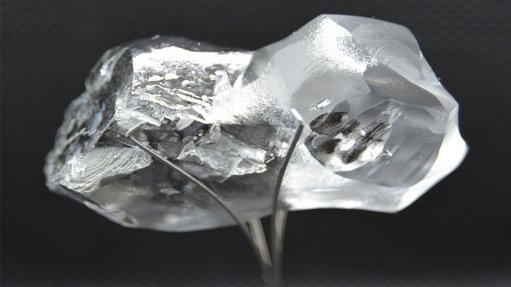Covid-hit civil aerospace unit drags down Rolls-Royce
UK-based global major industrial technology group Rolls-Royce has unveiled its results for the first half (H1) of 2020. It reported that the Covid-19 pandemic had had a significant impact on its performance so far this year. For example, underlying revenues came to £5.6-billion, a drop of 24% in comparison to H1 2019, while reported revenues for H1 this year were £5.5-billion, down 26% year-on-year.
The group’s Civil Aerospace business was especially hard hit. Over the complete half-year, deliveries of large engines and the number of flying hours achieved both fell by about 50%. During the second quarter, engine flying hours plummeted by 75%. Flying hours for engines on regional airliners and business jets proved, however, to be more resilient. Nevertheless, it was the Civil Aerospace business that dragged the entire Rolls-Royce group into the red. During this year’s H1, Civil Aerospace suffered underlying operating losses of £1.826-billion, giving the total group an underlying operating loss of £1.669-billion.
The Power Systems business suffered some impact from Covid-19, as a result of suppressed industrial markets, economic disruption and consequent lower use (which affected the demand for services). On the other hand, the government-owned marine systems segment of the business proved stable. During H1, Power Systems recorded a profit (in nominal currency terms) of £22-million.
In sharp contrast, the Defence business stayed strong. Not only did it not suffer any material impact on its results from the pandemic, it also delivered strong profit growth. Its underlying profit for H1 this year was £210-million
The ITP Aero subsidiary was hit by the same Covid-19 headwinds as the Civil Aerospace business. ITP has been identified by the group as one of a number of potential disposals, which could fetch the group more than £2-billion and help rebuild Rolls-Royce’s balance sheet, post-Covid-19.
The group was also executing the largest reorganisation of its Civil Aerospace business in its history. This had been launched in May 2020 and included cutting the division’s workforce by about 33%, or by 8 000 people, plus another 1 000 job losses from the group’s “central functions”. As of August 27, more than 4 000 workers had left the business, with the remaining 5 000 expected to go by the end of this year. These job cuts are spread across the business – in the UK, Germany, Singapore and elsewhere.
Further, Civil Aerospace manufacturing operations were to be consolidated. Rolls-Royce was proposing to concentrate wide-body engine assembly from three sites (Derby in the UK, Dahlewitz in Germany and Singapore) to one site (Derby), and to consolidate production of Trent advanced engine fan blades from two sites (Barnoldswick, in the UK, and Singapore) to one (Singapore). Likewise, advanced disc and turbine blade machining would be consolidated from two sites (Crosspointe, in Virginia, in the US, and Derby) to one (Derby) while blisk (an acronym for blade integrated disk) production would be consolidated from three sites (Annesley, in the UK; Derby; and Oberusel in Germany) to two (Derby and Oberusel).
“This restructuring has caused us to take difficult decisions resulting in an unfortunate but necessary reduction in roles,” said Rolls-Royce CEO Warren East. “These actions will significantly reduce our cost base, which, combined with recovery in Power Systems and continued resilience in Defence, will help us to deliver significantly improved returns as the world recovers from the pandemic.”
The group has also increased its liquidity. This amounted to £6.1-billion at the end of H1, composed of £4.2-billion in cash (as of June 30) and £1.9-billion in an undrawn revolving credit facility. A further £2-billion undrawn term load was reported by Rolls-Royce in July and finalised during this month.
Comments
Press Office
Announcements
What's On
Subscribe to improve your user experience...
Option 1 (equivalent of R125 a month):
Receive a weekly copy of Creamer Media's Engineering News & Mining Weekly magazine
(print copy for those in South Africa and e-magazine for those outside of South Africa)
Receive daily email newsletters
Access to full search results
Access archive of magazine back copies
Access to Projects in Progress
Access to ONE Research Report of your choice in PDF format
Option 2 (equivalent of R375 a month):
All benefits from Option 1
PLUS
Access to Creamer Media's Research Channel Africa for ALL Research Reports, in PDF format, on various industrial and mining sectors
including Electricity; Water; Energy Transition; Hydrogen; Roads, Rail and Ports; Coal; Gold; Platinum; Battery Metals; etc.
Already a subscriber?
Forgotten your password?
Receive weekly copy of Creamer Media's Engineering News & Mining Weekly magazine (print copy for those in South Africa and e-magazine for those outside of South Africa)
➕
Recieve daily email newsletters
➕
Access to full search results
➕
Access archive of magazine back copies
➕
Access to Projects in Progress
➕
Access to ONE Research Report of your choice in PDF format
RESEARCH CHANNEL AFRICA
R4500 (equivalent of R375 a month)
SUBSCRIBEAll benefits from Option 1
➕
Access to Creamer Media's Research Channel Africa for ALL Research Reports on various industrial and mining sectors, in PDF format, including on:
Electricity
➕
Water
➕
Energy Transition
➕
Hydrogen
➕
Roads, Rail and Ports
➕
Coal
➕
Gold
➕
Platinum
➕
Battery Metals
➕
etc.
Receive all benefits from Option 1 or Option 2 delivered to numerous people at your company
➕
Multiple User names and Passwords for simultaneous log-ins
➕
Intranet integration access to all in your organisation


















